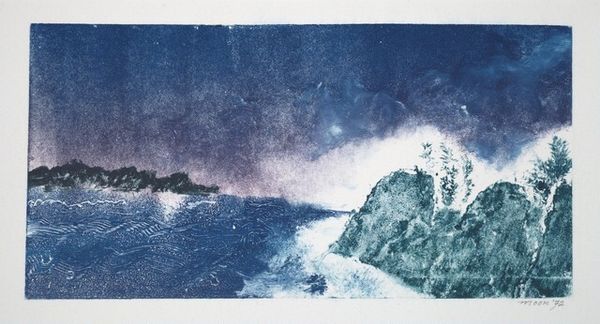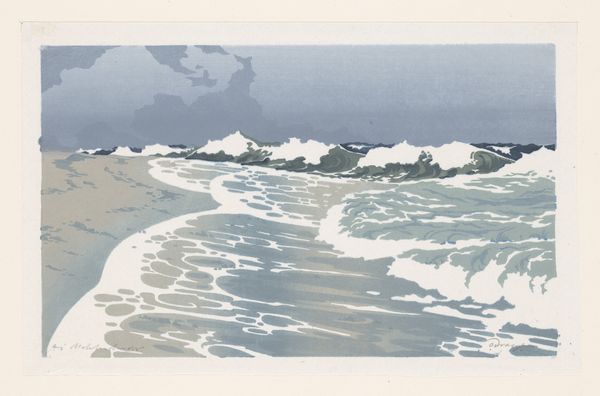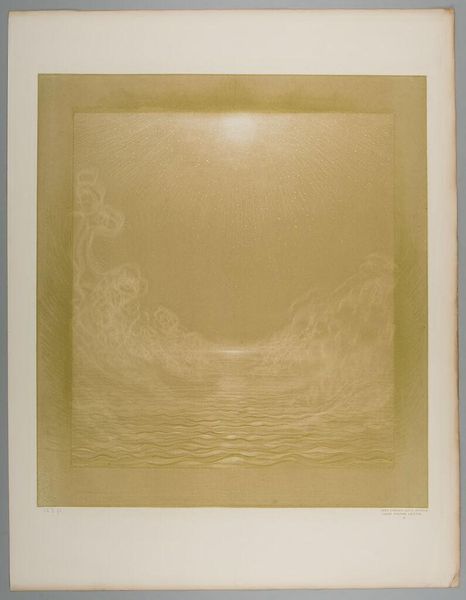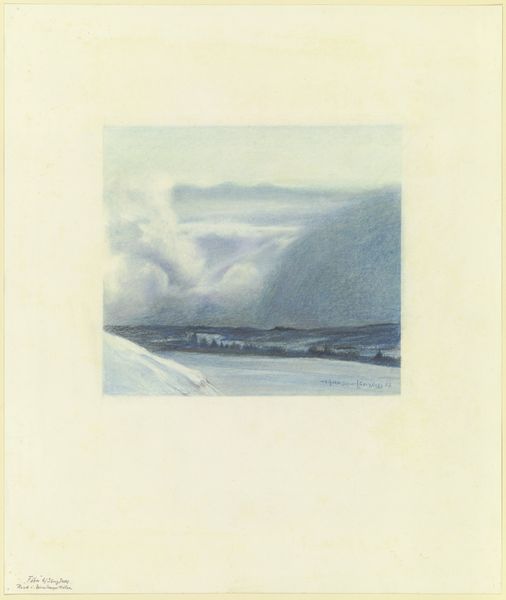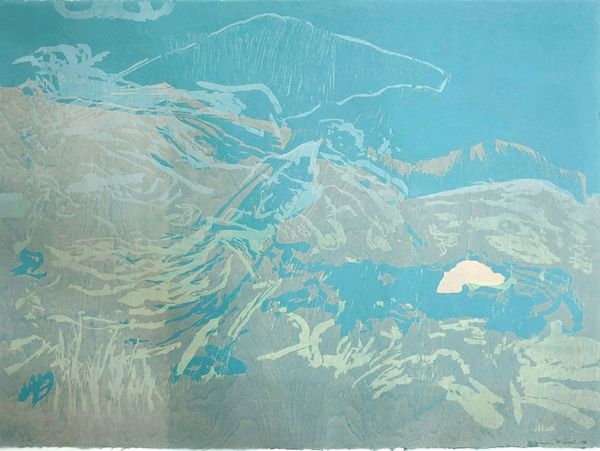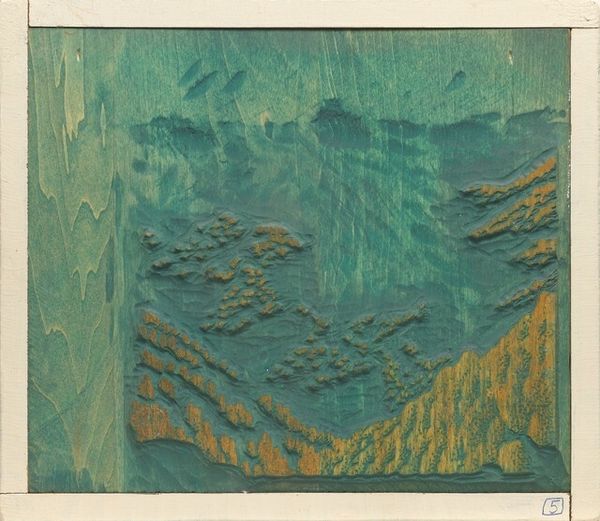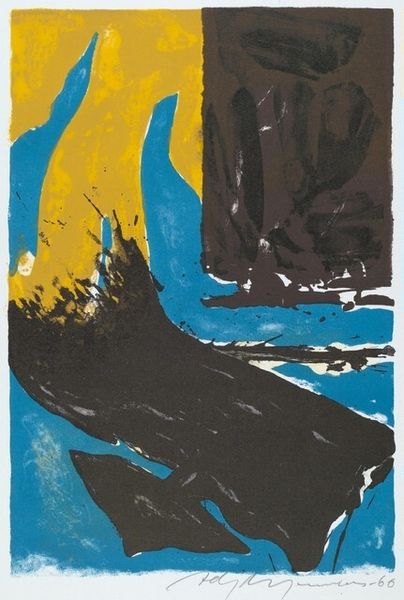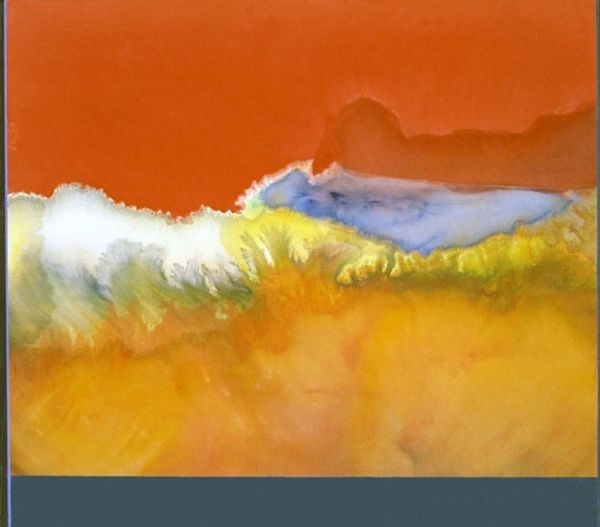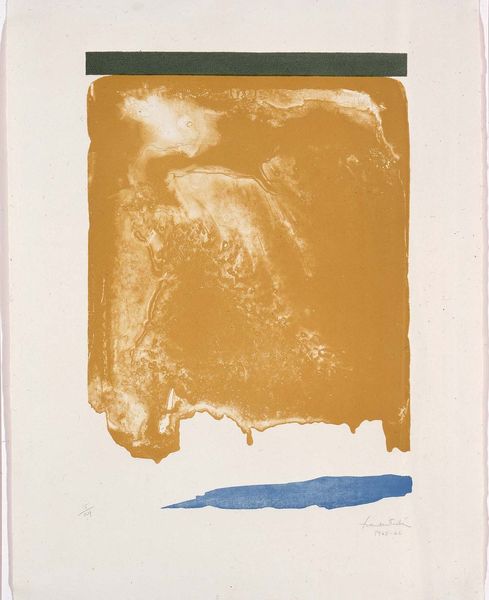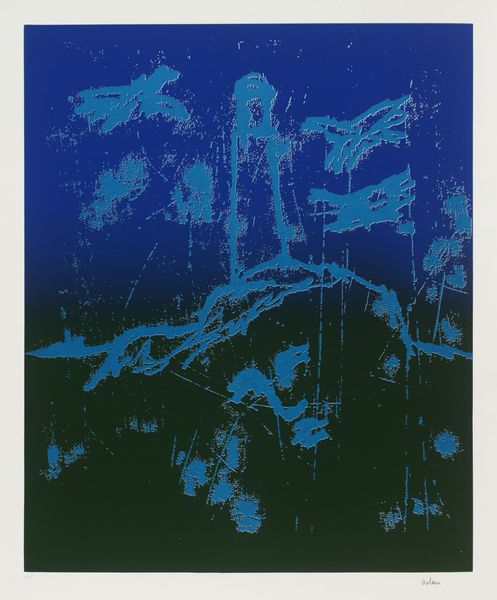
Dimensions: 10 5/8 × 10 1/8 in. (26.99 × 25.72 cm) (image)12 1/2 × 11 15/16 in. (31.75 × 30.32 cm) (sheet)
Copyright: No Copyright - United States
Curator: Here we have "Moonlight on the Konkapot," a woodcut and watercolor piece created around 1926 by Eva Auld Watson. Editor: My goodness, it shimmers! There's a feeling of barely-contained power in this river scene, that almost abstracted churn of water... Curator: Precisely. Watson’s method here really speaks to a broader movement, as many artists in this period, and especially women artists, were looking to printmaking as a more accessible medium. The lower production costs involved also meant a wider reach for their message and art. Editor: Message… the *immediate* feeling this evokes for me is how the cool moonlight grazes the rushing rapids, yet the energy is almost feverish, visceral. There’s almost something violent in its beauty, like observing an untouched part of nature wrestling with its own spirit. Curator: The interplay between the woodcut technique and then the delicate hand-application of watercolor enhances the material qualities and contributes to your very perceptive observation. We can read this through the context of early 20th century interest in landscape as a space both of recreation, resource, and inspiration but also potential artistic exploitation through processes of industrialization and tourism. Editor: Artistic exploitation versus appreciation; it reminds me of how nature's strength will swallow you whole if you fail to respect it. You mention the early 20th century, that almost sounds as if industrial elements contrast a wild element? That push and pull of wild energy tamed or transformed somehow… Curator: Watson clearly harnesses those tensions through the very deliberate choices in the printing and coloring process. These materials and how the process makes these affordable landscape are then a conscious engagement in an evolving landscape. It's about the interplay between handcraft and mechanization. Editor: Interesting... the geometry alongside wildness. Makes one consider control against raw nature, even internal and societal. Well, Watson certainly knew her way around conjuring drama! Curator: She gave accessibility and an affordable beauty and wildness a fighting chance. Editor: Yes, a beautiful paradox – a quiet visual roar. Thank you.
Comments
minneapolisinstituteofart almost 2 years ago
⋮
In the 1920s, Eva Auld Watson spent summers in the Berkshire Mountains in Massachusetts, working in the barn-turned-studio she shared with her printmaker husband, Ernest Watson. The Konkapot River, named after a Mohican chief, ran near the studio. This image could represent the creative charge she got from being in this rustic setting. After traveling through a daunting rock formation, the water plows into the moonlight, spreading forth like a glowing mantel fringed in lavender. After printing the white highlights, Watson added a few spatters to the sky for stars.
Join the conversation
Join millions of artists and users on Artera today and experience the ultimate creative platform.


